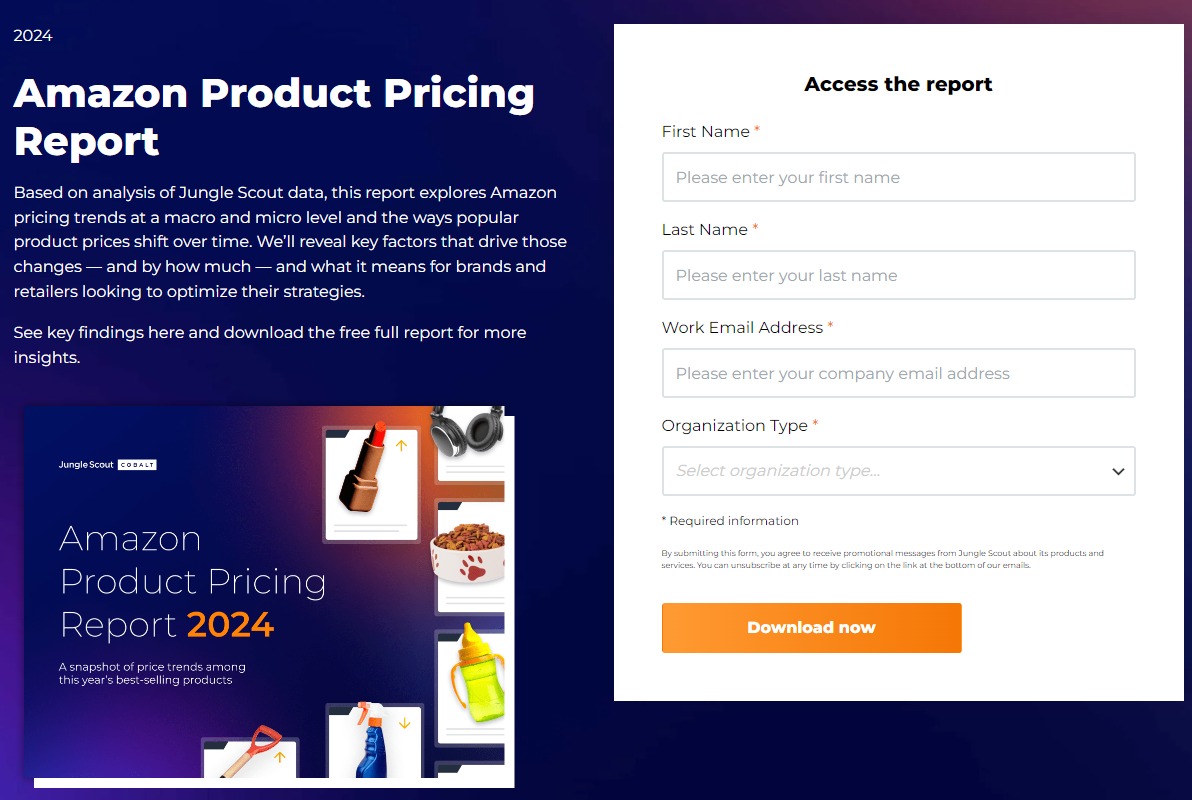Amazon Product Pricing Report
Jungle Scout has tons of data, so once a year they release their Amazon Product Pricing Report a free and invaluable report.
For every Amazon Seller, understanding Amazon pricing trends is key, especially since we see year after year shifts towards more nuanced pricing strategies that emphasize data analytics and competitive positioning. So, pricing analysis is a must and, I must say, including a repricer on your strategy is too.
One notable trend is the increased use of machine learning algorithms to adjust prices in real-time. These sophisticated systems consider factors such as competitor pricing, inventory levels and consumer purchasing habits to determine the optimal price point. Tools such as Seller Snap, BQool and others are used every day by Sellers on the Marketplace to reprice every 15 minutes or less, so don’t sleep on those tools.
What’s inside the Amazon Product Pricing Report?
The Amazon Product Pricing Report from Jungle Scout analyzes key trends and provides actionable insights that can help brands adjust their pricing strategies effectively. What you’ll find in the report:
- Actionable insights to help brands build a solid pricing strategy.
- Analysis of categories that experienced average product price increases.
- Price history and analysis of best-selling products on Amazon.
- Impact of events like holidays and Amazon’s algorithms on prices.

Methodology
Findings in this report are based on analysis of Jungle Scout data collected at the category level and at the product level in the U.S. marketplace. At the category level, it includes analysis of daily and monthly average product prices from 19 of Amazon’s product categories. At the product level, findings are based on analysis of daily pricing data for 100 best-selling products on Amazon across eight popular categories: Arts, Crafts & Sewing; Pet Supplies; Beauty & Personal Care; Home & Kitchen; Clothing, Shoes & Jewelry; Health & Household; Baby; and Patio, Lawn & Garden.
Key takeaways
Here’s a breakdown of the key takeaways:
- Less volatile prices: product prices on Amazon were less volatile and lower compared to the previous year. However, this trend seems to be changing: the number of categories with increased average product prices.
- High demand, high prices: even during popular sales events like Prime Days, Black Friday and Cyber Monday, best-selling products are less likely to drop in price. In a sample of 100 best sellers from five different categories, about two-thirds experienced year-over-year price fluctuations of less than 10%.
- Adapting to cautious consumer spending: Brands are still coping with consumer spending caution. As a result, those selling luxury, high-priced and non-essential products may feel more pressure to drop prices to increase sales. Products like electronics and appliances have seen drops in average product prices by as much as 50% over the past two years, while prices in categories like groceries continue to rise.